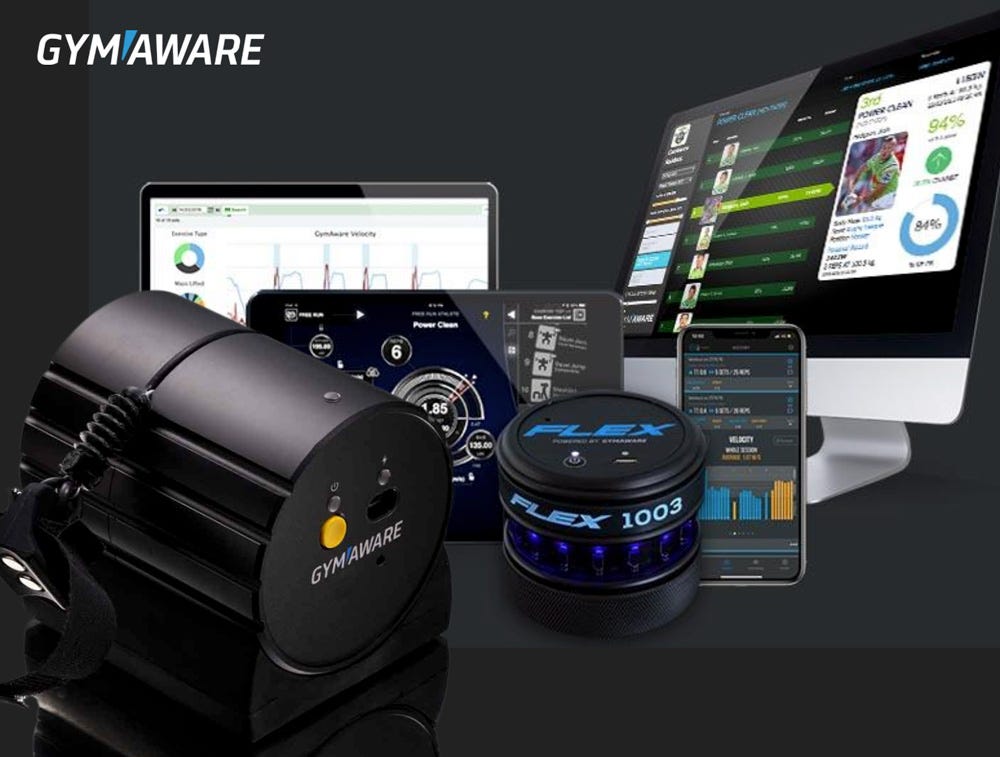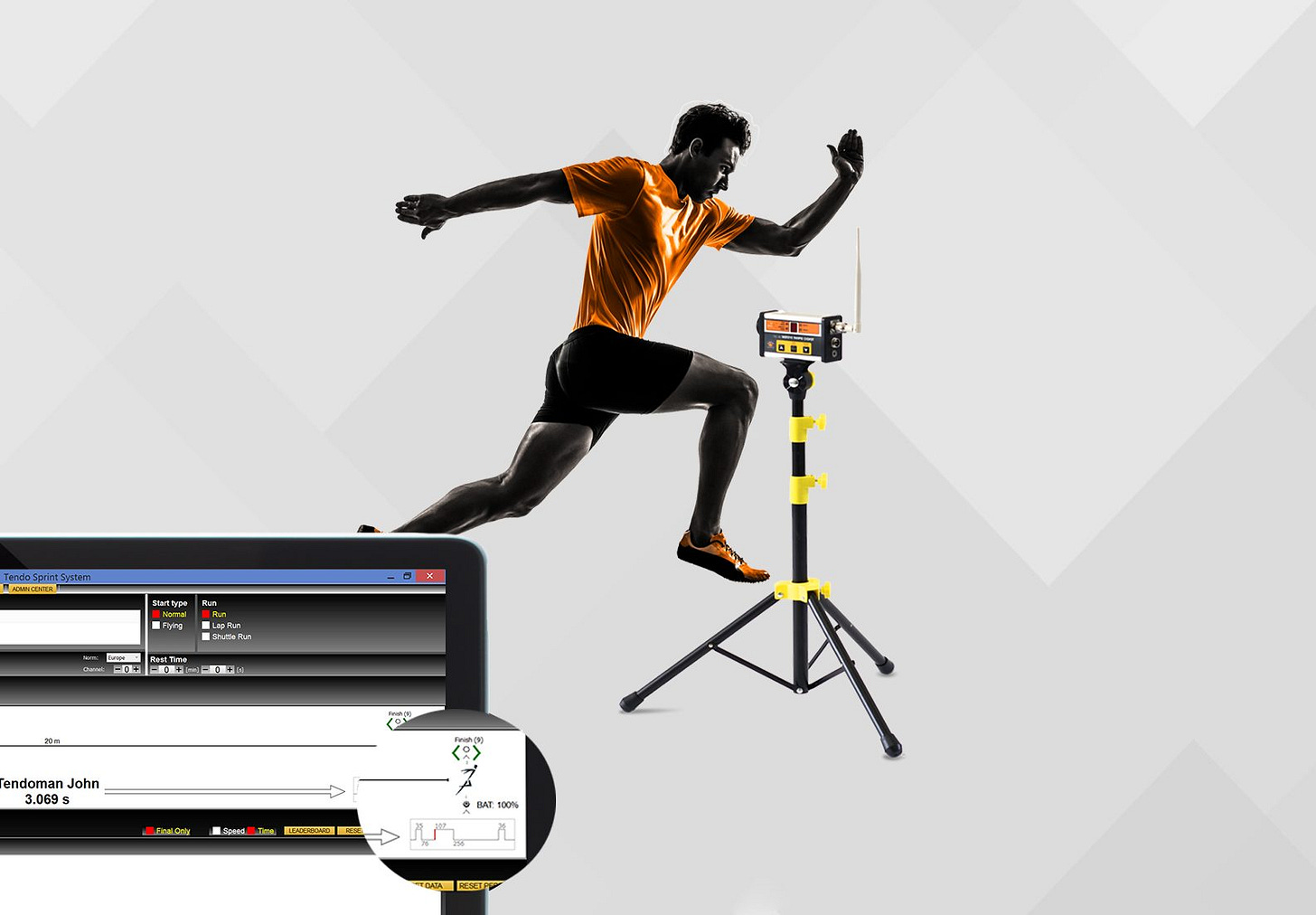💪 Upside Analysis: Velocity Training Vendor Ecosystem: Key Drivers, Challenges, Use Cases, Vendors, Recommendations to Teams
Velocity-based training (VBT) represents a paradigm shift in strength and conditioning—from static percentages to dynamic, real-time feedback. By measuring the speed at which an athlete moves a load (typically a barbell), coaches can infer intent, fatigue, neuromuscular readiness, and training adaptations. VBT allows practitioners to move beyond guesswork into data-informed precision.
Historically reserved for academic research or elite Olympic programs, VBT is now a staple in professional sports, NCAA programs, military training, and performance-oriented private gyms. The acceleration in sensor technology, computer vision, and app development has lowered barriers to entry, allowing teams of all sizes to tap into these benefits. This analysis aims to help practitioners, executives, and buyers navigate the expanding vendor ecosystem and maximize the performance potential of VBT.
Market Size & Growth Trajectory
The velocity training market is part of the broader strength diagnostics and performance tracking market, currently valued at an estimated $350M USD in 2025, with projections pointing toward $600M+ by 2030, growing at a CAGR of 11–13%. Key segments include:
Elite sports teams (NFL, NBA, MLS, NHL, NCAA)
Private performance gyms and training facilities
Military and tactical athlete programs
Rehabilitation and physiotherapy clinics
The North American market leads in adoption (45%), with strong uptake in Europe (30%), especially in Scandinavian and UK-based sport institutes. Australia and New Zealand—early adopters of GymAware—continue to lead in research-driven application.
Growth drivers include:
Increased performance data integration
Wearable and contactless tech maturity
Shift toward individualized athlete monitoring
Key Adoption in Elite Sports: Stats & Trends
VBT has become deeply embedded in high-performance ecosystems. Key adoption statistics:
NFL: All 32 teams use some form of VBT during off-season and in-season strength blocks.
NBA: Over 30 teams use systems like GymAware, Perch, or Output Sports for load monitoring and fatigue management.
NHL: Growing adoption led by U.S. franchises focusing on off-ice power and RTP phases.
MLS: Clubs are increasingly using wearable and computer vision solutions to assess strength and readiness, often syncing with GPS and sleep data.
NCAA: Over 80% of Division I football and 60% of D1 basketball programs now utilize VBT tools. Big Ten, SEC, and ACC schools are among the leaders in implementation.
Military: Tactical athlete performance teams (U.S. Army, Navy SEALs, Air Force Special Forces) are incorporating VBT into assessments of readiness and movement efficiency.
Key Drivers of Adoption
a. Objective, Real-Time Feedback
VBT replaces subjective effort scales or static loading charts with immediate data on movement velocity and power output. This real-time feedback loop increases training intent and accountability.
b. Fatigue and Readiness Monitoring
Tracking velocity across reps or sets helps identify neuromuscular fatigue or off-days. Coaches can auto-regulate intensity and volume to optimize stimulus without overtraining.
c. Injury Prevention and RTP
By measuring velocity and power symmetry in bilateral movements (e.g., squats), coaches can detect lingering deficits post-injury and progressively load athletes with precision.
d. Performance Optimization
VBT allows for power profiling to find the athlete’s optimal load (%1RM) that produces peak power, aiding in developing sport-specific explosiveness.
e. Technology Integration
Many systems now sync with AMS platforms (Smartabase, Kitman Labs, Fusionetics) or provide API access, streamlining workflow and analysis across departments.
Key Use Cases Across the Athlete Lifecycle
In the Weight Room
Adjust daily loads based on actual bar speed
Minimize unnecessary fatigue through velocity stop thresholds
Determine power output and load-velocity profiles for each athlete
In Return to Play (RTP)
Use submaximal movements to compare affected vs. unaffected limbs
Track progress from bodyweight movements to loaded bilateral exercises
Quantify thresholds for reintroduction to full team training
In Season
Monitor bar speed for signs of fatigue during congested fixtures
Use low-load explosive movements to maintain power without heavy fatigue
Track residual training effects
In Offseason/Preseason
Identify force–velocity imbalances
Set individualized training targets based on baseline power profiling
Build explosive strength through tracked progression
Across Development Pathways
Establish normative data by age, position, or sport
Track year-over-year improvements
Educate young athletes on intent and effort
Key Challenges & Considerations
Despite the promise of VBT, several practical barriers remain:
a. Cost and Scaling
High-quality systems like Perch or GymAware can cost $2,000–$3,500 per unit, making full-team implementation expensive, especially at the college or youth level.
b. Data Literacy
Strength coaches need to be trained not only in using the hardware but also in interpreting velocity zones, understanding force-velocity profiles, and applying findings in real-time.
c. Hardware Fragility and Logistics
Tethered systems (e.g., GymAware, TENDO) require careful setup and maintenance while Camera based systems (Perch) are rack-specific.
d. Variability and Noise
Small inconsistencies in lift technique or starting posture can lead to data variance, especially in bodyweight or freeform exercises.
e. Integration with Broader Systems
Some platforms lack robust APIs or integration with existing AMS, wearables, or HRV systems, leading to siloed data.
Key Vendors Comparison Table
Source: Companies’ website, Upside Global, 2025
This vendor offers a portable motion sensor system that utilizes an IMU for comprehensive athletic tracking. Their wearable technology captures data on bar speed, jumps, sprints, and general mobility. It is designed to be versatile for various mobile and multi-sport training environments. Ideal for mobile or multi-sport environments. & Velocity Based Training (VBT) metrics (e.g., bar velocity), jump metrics (e.g., height, power, Reactive Strength Index - RSI), sprint metrics, mobility assessments (range of motion), balance, stability, strength endurance, wellness indicators, load monitoring.
GymAware specializes in research-grade velocity tracking technology, employing a tethered LPT system. Their solutions integrate with iPad control and cloud analytics, providing in-depth data for power profiling and daily readiness assessments. They are a popular choice among professional and collegiate teams seeking advanced performance insights. Widely used by pro and collegiate teams for power profiling and daily readiness, concentric and eccentric mean and peak velocity, power, and force; time to peak velocity/power/force; rep height, dip, distance, duration, bar path visualization; Rate of Force Development (RFD); jump height, power, and velocity; 1RM estimation via velocity; velocity drop-offs.
Perch provides a rack-mounted AI camera system for contactless measurement of velocity and power in weightlifting. Their technology automatically logs training data and presents it through a user-friendly visual interface and cloud-based dashboard. This system streamlines data collection and analysis for strength training programs. Their product also includes a cloud-based dashboard. It can track depth, displacement, velocity (mean and peak), acceleration, power output, bar path, and potentially other 3D movement metrics for barbell and bodyweight exercises (e.g., goblet squats, push-ups, pull-ups, jumps). Total work/energy expenditure.
Calibrex offers an AI-powered camera system that connects to a mobile application for bar speed and symmetry tracking. Their setup is designed to be simple and accessible, making it a flexible option for both small and growing training programs. This vendor focuses on providing practical and mobile-integrated performance analysis. Flexible option for small or growing programs. & Reps, sets, rep speed (m/s), power (w), rest times, speed loss (fatigue monitoring), calories burnt, potentially form analysis and time under tension.
TENDO Sport is known for its durable, tethered LPT device, a legacy system widely used for measuring bar speed and power output. Their product is particularly popular within Olympic lifting and European strength training communities. It is considered a budget-conscious and reliable option, prioritizing core functionality without unnecessary frills. Their device can track the average power, partial average power, peak power, peak velocity, average velocity (for VBT), peak force (for RFD), eccentric average velocity, recovery time, rest time between reps/sets, percent value of the best repetition.
Strategic Recommendations to Teams
1. Match the Tool to Your Environment
Pro teams or universities with large weight rooms: Use a mix of devices for racks and for versatility.
On-the-go or multi-site coaches: Opt for vendors like Output Sports and other devices for its portability and broad use cases.
Budget-conscious programs or emerging markets: Pick a device that matches your budget and that can deliver solid value with core features.
2. Prioritize Integration
Ensure the system can export data in usable formats or connect with your athlete management system (AMS). API compatibility is key for data ecosystems.
3. Invest in Education
A powerful VBT system is only as good as the coach interpreting it. Educate staff on key concepts like:
Minimum velocity thresholds (MVT)
Velocity loss thresholds
Force–velocity profiling
Load-velocity relationships
4. Pilot, Then Scale
Start with 1–2 units across teams or lifting stations, gather feedback, and refine workflows before full rollout.
5. Use VBT Holistically
Don’t silo VBT to just squats and bench. Use it to evaluate jumps, sprints, rehab exercises, and upper body asymmetries.
Conclusion
Velocity-based training is not just a trend—it’s an evolution in how strength is prescribed, monitored, and optimized in elite sports. From NFL franchises to Olympic performance centers, VBT is enhancing decision-making at every stage of the training lifecycle.
With multiple high-quality vendors now on the market, selecting the right system depends on organizational goals, budget, facility type, and sport demands. As tech continues to evolve—from wearables to vision-based AI—VBT will become even more integral to performance optimization, injury reduction, and athlete development.
Smart investment in velocity tech, paired with staff education and integration into broader data workflows, will separate forward-thinking organizations from the pack.
You may also like:
📈 Upside Analysis: Markerless Systems and Computer Vision in Elite Sports: Key Trends, Drivers, Challenges, Vendors, Recommendations to Teams
Movement analysis is an essential component of elite sports, enabling teams, coaches, and athletes to gain insights into performance, injury prevention, rehabilitation, and tactical planning. Traditional motion capture systems required physical markers and specialized environments, limiting their application in real-world sports scenarios. However, adva…










